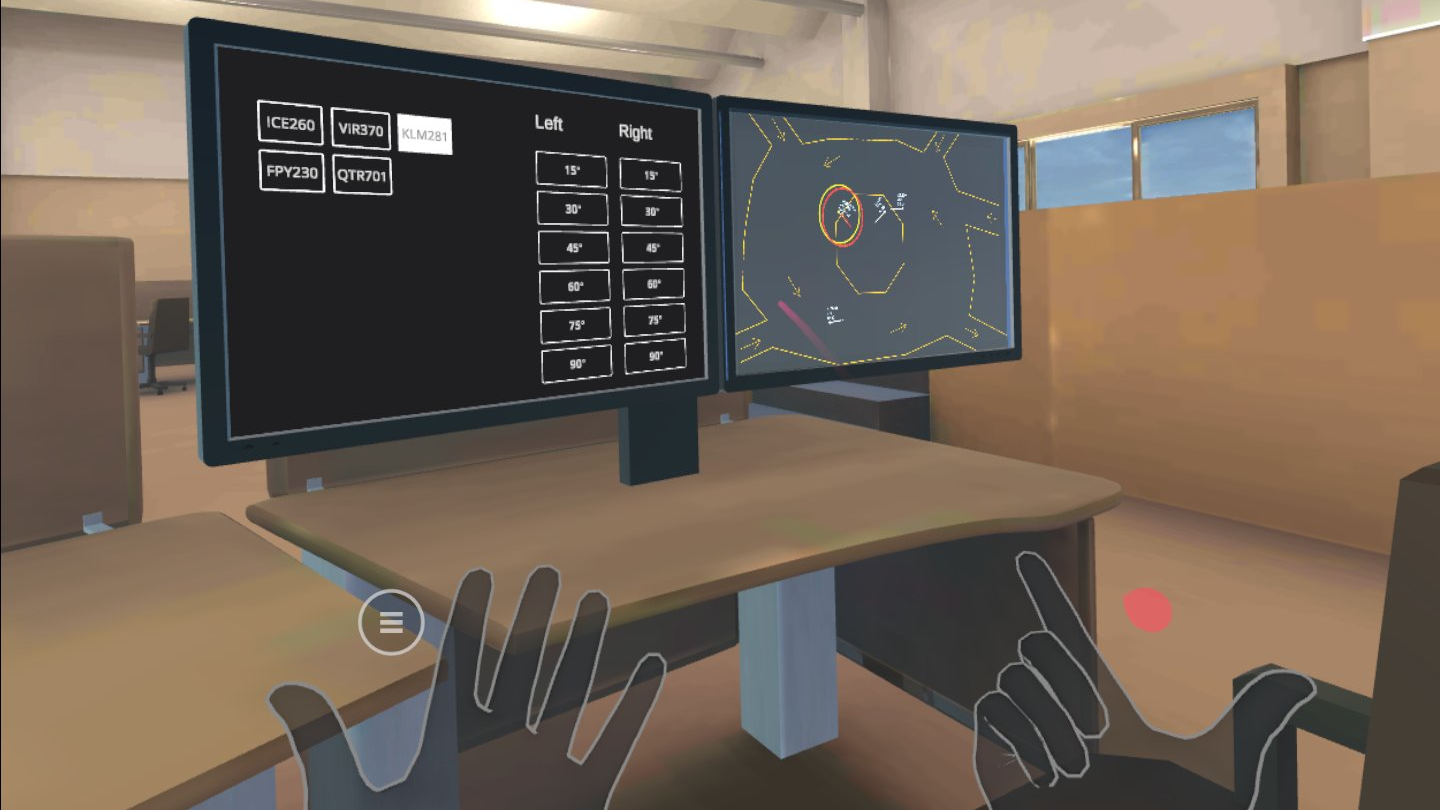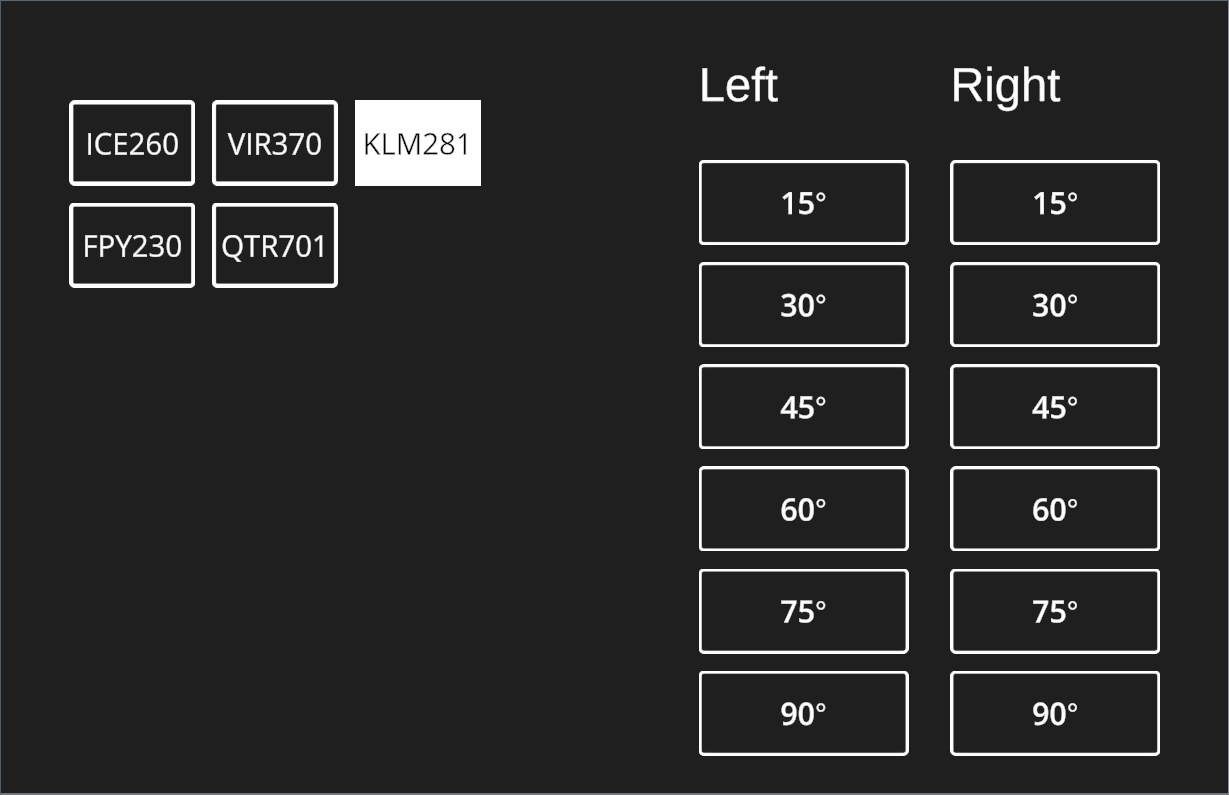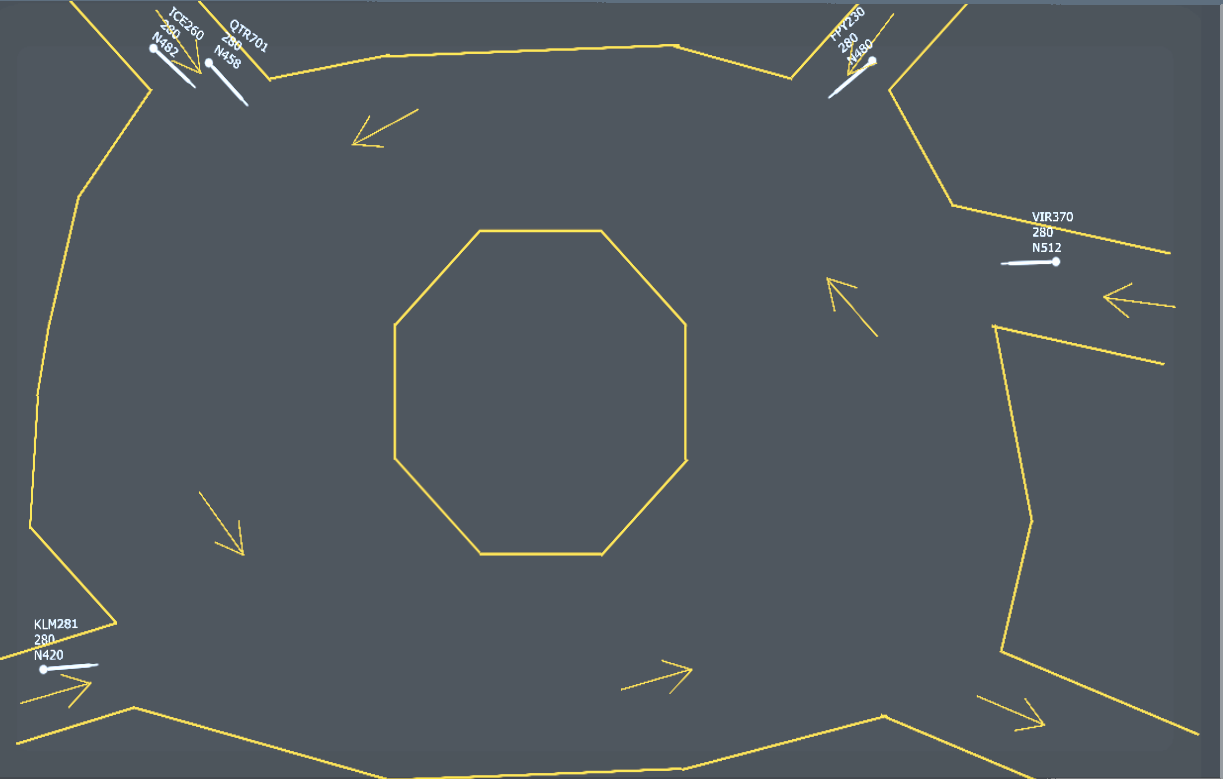Virtual Reality Air Traffic Controller



The North Atlantic is a hub of air traffic, with ISAVIA being at the heart of this bustling airspace. Entrusted by the International Civil Aviation Organisation (ICAO) to manage air traffic in the Reykjavik Control Area (CTA), ISAVIA ensures safe passage for over a quarter of all aircrafts crossing the North Atlantic. This vast region extends from 61°N latitude to the North Pole and 76°W longitude to the Greenwich meridian. Reykjavik CTA is notable for its flexibility in flight routing and altitudes, and its air traffic control relies on data from seven radar stations, providing a robust network for seamless air traffic control.
Objective:
The primary aim of this project is to explore how external factors can influence the performance of mission-critical tasks, such as those undertaken by air traffic controllers. With so many aircrafts constantly in transit, it is imperative to have precise control systems to ensure safety. Human-led traffic controllers play a pivotal role in directing these aircrafts, averting potential collisions and ensuring smooth navigation.
Original Implementation:
Emil Þór Emilsson initially crafted an Oculus VR experience replicating ISAVIA's physical environment. This experience emulated the challenges faced by real ATC personnel. Learn more about Emil's original creation here.
Enhancements & Additions:
- Adapted User Interface Design: Although inspired by actual ATC systems, the interface has been specifically tailored for the VR experience, ensuring seamless and engaging user interaction.
- Hand Tracking: Integrating the Oculus Interaction SDK has eliminated the need for joysticks. Now, users can intuitively interact using hand-tracking, even employing pinch mechanics to navigate the environment.
- Simulation Logic Overhaul: The rigid, hardcoded GUI has been replaced with a dynamic system. This allows for a broader range of simulated scenarios, dynamically adjusting the GUI based on the specific situation.
- Performance Metrics: Comprehensive tracking captures vital events during the simulation. From maneuver requests to proximity warnings, this data is invaluable for evaluating task performance and understanding the impact of external factors.
- Survey Integration: An external API connects to a custom survey platform. This setup facilitates a real-life data collection experiment, where participants provide feedback before and after the VR experience, thus correlating their insights with in-simulation data.
Interaction Breakdown:
Users face two monitors in the VR environment:
Right Monitor: Displays a top-down perspective of moving aircrafts with their flight paths. The task involves guiding these aircrafts to exit points safely.
Left Monitor: Features a selection and control panel. Users select an aircraft, then execute adjustment commands, subsequently witnessing the effect of their inputs on the right monitor. The experience culminates when all aircrafts have safely reached exit points.
Conclusion:
The enhanced VR Air Traffic Controller project presents a more authentic, intuitive, and flexible experience. By combining realistic simulations with detailed performance metrics, it offers profound insights into how external factors can influence the performance of mission-critical tasks, such as air traffic control. This amalgamation of VR and real-world challenges showcases the transformative potential of virtual reality in research, training, and understanding complex domains.